
Official Edgar Rice Burroughs Tribute and Weekly Webzine Site Since 1996 ~ Over 15,000 Web Pages in Archive Volume 1693 |

Official Edgar Rice Burroughs Tribute and Weekly Webzine Site Since 1996 ~ Over 15,000 Web Pages in Archive Volume 1693 |
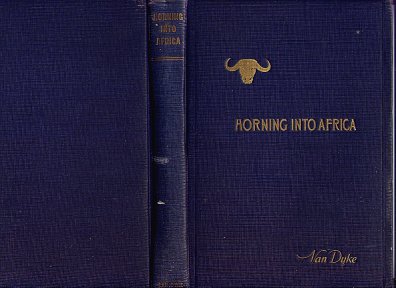
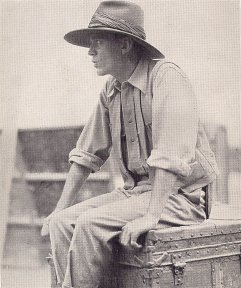
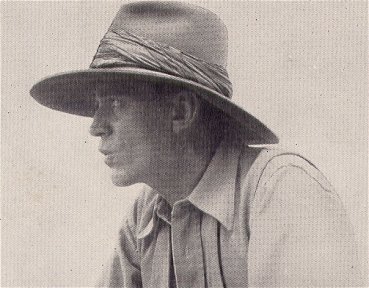
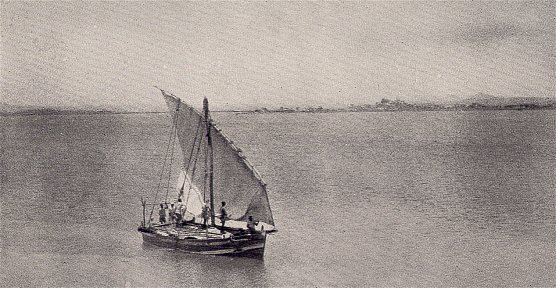
An Arab Dhow off the African
Coast, Loaded to the Gunnel with Vermin and Smells.
These little ships often traverse
two or three thousand miles of ocean.
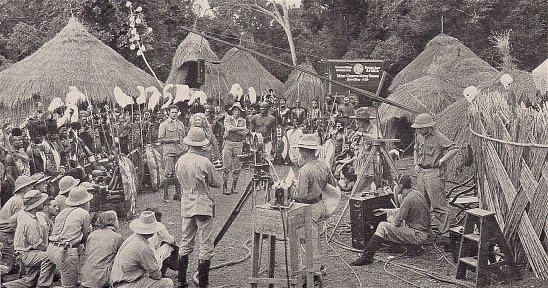
With "Mike" and Camera in The
Heart of Uganda.
This picture is reproduced for
the simple reason it is about the only time on record
anyone ever caught me with my
back to the camera.
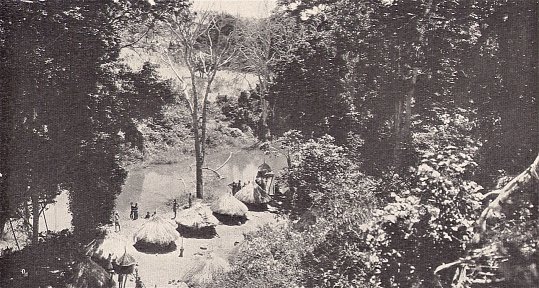
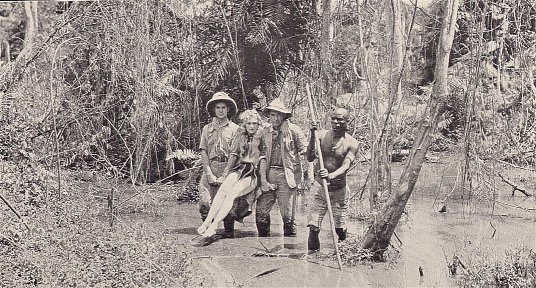
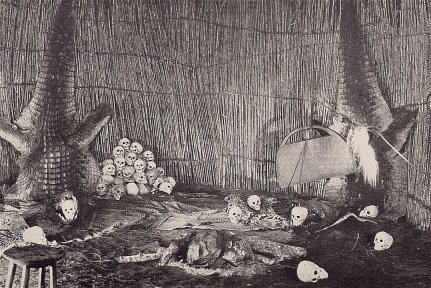
Ju-ju and Witchcraft. Interior
of a Medicine Man's hut way up among the Alunas.
Cannibalism is not practiced,
or if at all, it is in secret,
as the governments have inconsiderately
denied them this playful little pastime.
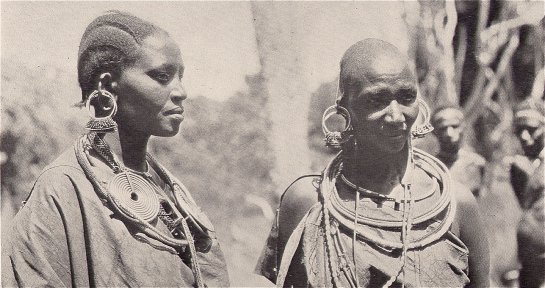
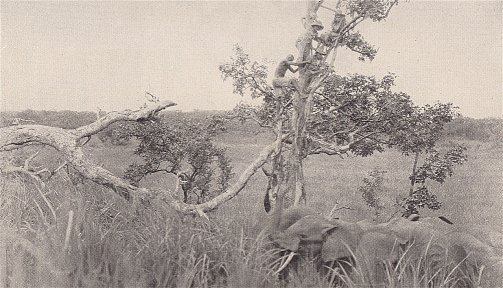
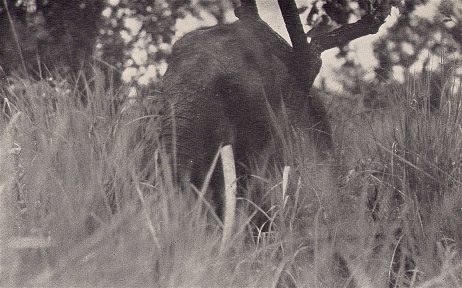
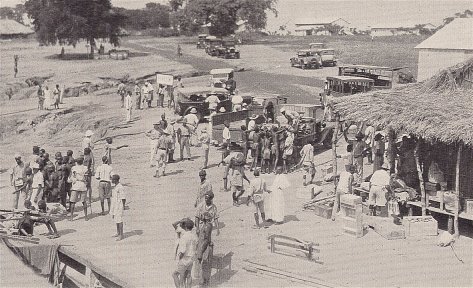
Unloading from a River Boat
at Rhino Camp.
And reloading to trucks on the
shores of the White Nile. From here we went into the Congo.
The Clothing most of the natives
wore in this district would have made Eve look dressed up.
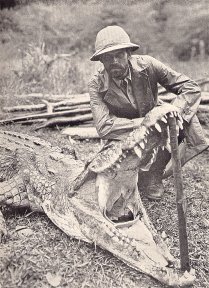
Nice, Pearly, White Teeth
that need very little cleaning
by the birds, but the nest of leeches, which you can see in the lower jaw,
often affords a hearty repast
for the plover.
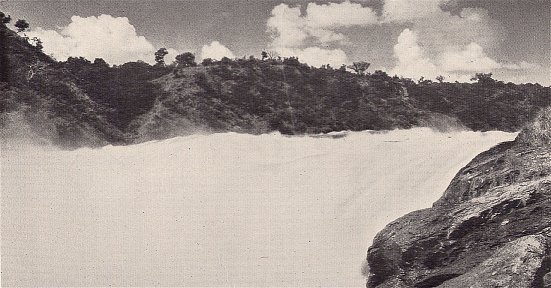
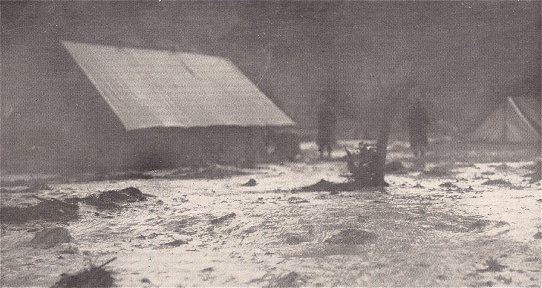
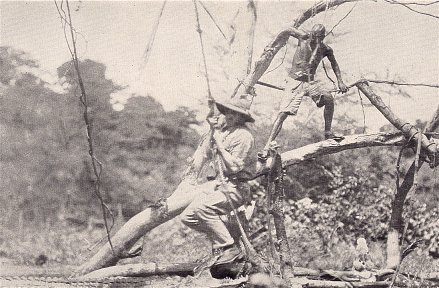
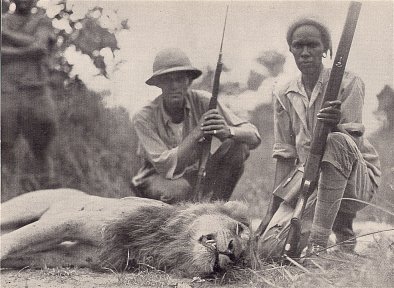
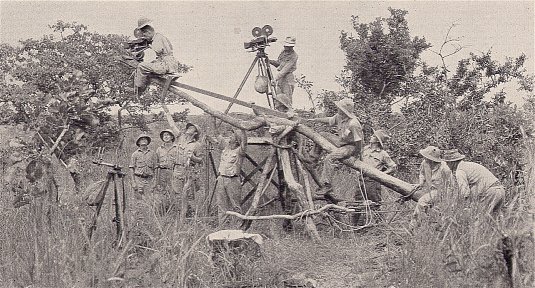
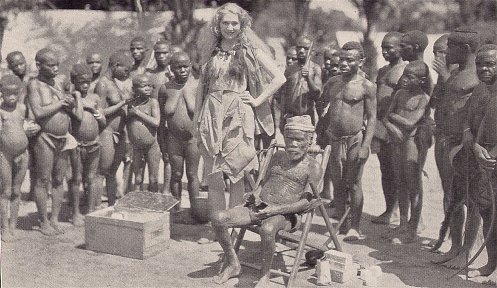
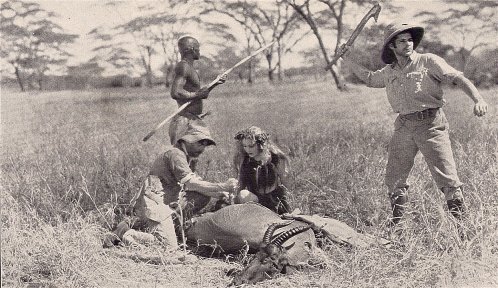
Harey Carey, Edwina Booth, Duncan
Renaldo and Mutia Oomooloo and the body of a topi.
Standing over the body of a
topi from which they had just driven three lions.
They go on with the scene whiel
the three lions sit not far off and wonder what foolishness this is
. . . It was.
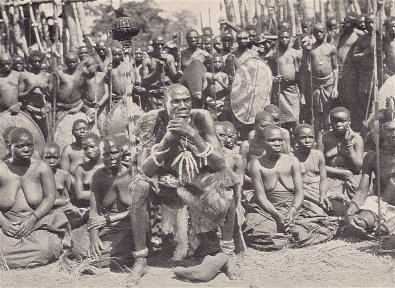
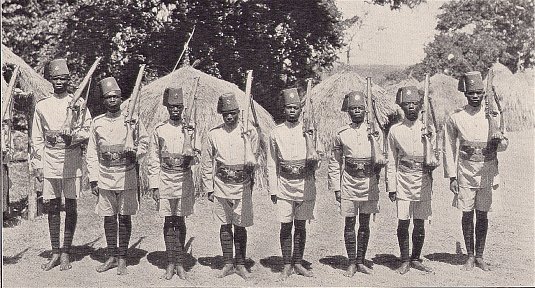
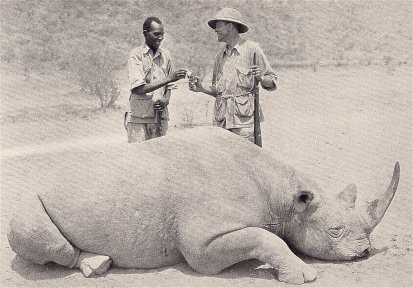
This Poor Fellow Died Hard
and gave us a few very unpleasant
moments.
I expected to get a large block
of stock from the Lucky Strike people when I sent them this picture.
They mailed me six packages.
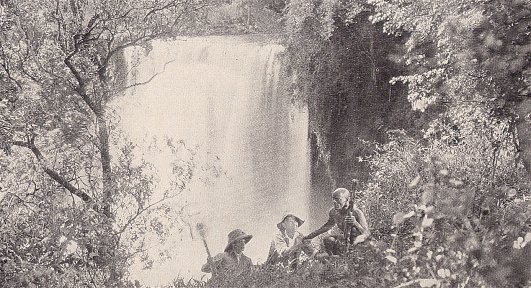
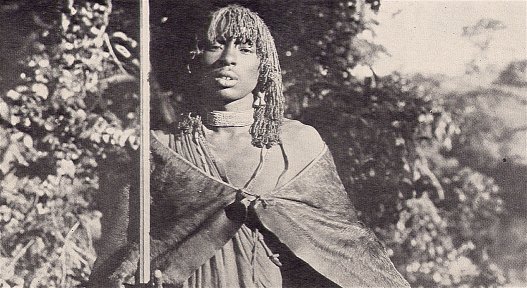
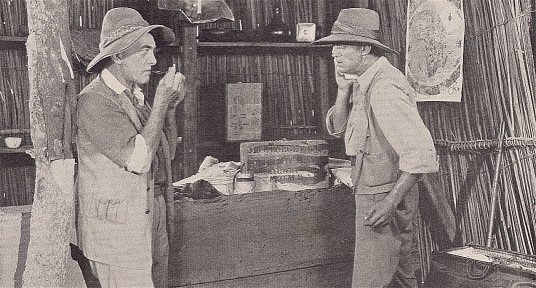
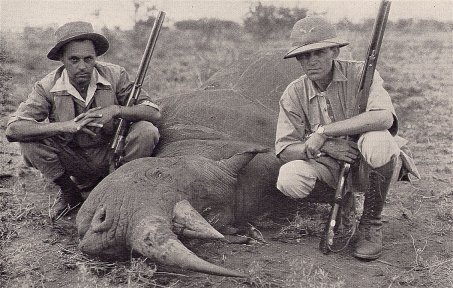
Dickinson, Myself, and One of
the Enemy
at about the time when the little
red bug was found.
Note the parrot-like mouth of
the rhino.
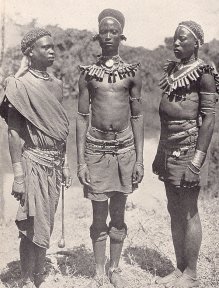
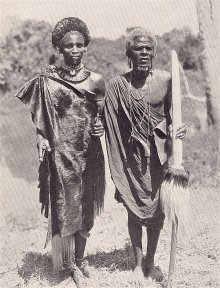
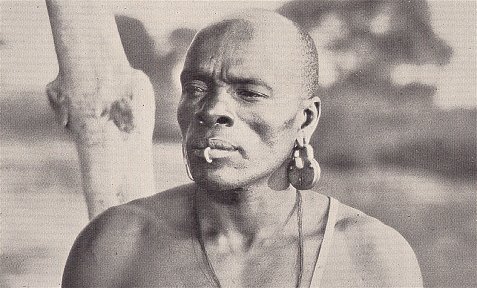
Mutia, Never Did Know What It
Was All About.
He just did what the crazy white
man told him to do and nearly stole the picture.
Horning Into Africa is
one of the 1,100 books described in the
PERSONAL LIBRARY OF EDGAR RICE
BURROUGHS PROJECT
www.ERBzine.com/dan
The book is featured on Library
Shelf UV with the following entry:
| W. S. "Woody" Van Dyke 1889 - 1943 ~ Woodbridge Strong Van Dyke |
| Horning Into Africa
~ 1931 ~ Los Angeles, Van Dyke/California Graphic ~ photographic frontispiece
and 26 other photographic plates ~ 219pp ~ Privately printed telling
of the story of the filming of Trader Horn ~ The book chronicles the MGM
company led by Van Dyke that went on location to Africa to film Trader
Horn in 1930. Van Dyke went on to direct Tarzan the Ape Man (1932) ~ "Detailing
the adventures revolving around the filming of Trader Horn near Lake Victoria.
There are episodes of hunting buffalo, Lion, and rhinoceros with professional
hunter W.V.D. Dickinson. The stars of the film, Harry Carey, Edwina Booth,
and Duncan Rinaldo, appear in one staged photograph after having driven
off a lion feeding on the carcass of a topi."
Filmography Josephine Chippo connection with Van Dyke |
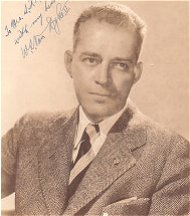 Woodbridge
Strong Van Dyke II: Before entering the movie business, Van Dyke
was a gold miner, a lumberjack, a railroad worker and a mercenary. Born
March 21, 1889 San Diego, CA - February 5, 1943 Brentwood, CA (suicide) Woodbridge
Strong Van Dyke II: Before entering the movie business, Van Dyke
was a gold miner, a lumberjack, a railroad worker and a mercenary. Born
March 21, 1889 San Diego, CA - February 5, 1943 Brentwood, CA (suicide)
He inaugurated his career at age three as a stage actor, in the company of his widowed actress-mother. When acting jobs were scarce, young Van Dyke worked as a miner, electrician and (allegedly) a soldier-for-hire in Mexico during the 'teens. In 1916, he was hired as one of several assistants to director D.W. Griffith, working in this capacity on Griffith's mammoth Intolerance. After assisting director James Young at Paramount, Van Dyke was allowed to direct his first solo film in 1917. He spent most of the 1920s laboring on quickie Westerns, earning a reputation for speed and efficiency. In 1928, he was brought into MGM's troubled production White Shadows on the South Seas, which, under the snail's-pace direction of Robert J. Flaherty (a brilliant documentary maker whose skills at fictional filmmaking was slight), was running way behind schedule. When White Shadows opened to critical and audience approval, Van Dyke was elevated to Hollywood's A-list of directors, though even when handed huge budgets and big stars he never altered his rush-it-through directorial technique (the one exception to this was his year-long sojourn on Trader Horn [1931]). "One Take Woody" was often derided by his fellow MGM directors, who bemoaned Van Dyke's "carelessness" and "sloppiness." However, Van Dyke's best films -- The Thin Man (1934), San Francisco (1936), It's a Wonderful World (1939) -- hold up far better than the works of many of his more art-conscious colleagues. A favorite of no-nonsense leading men like Clark Gable and William Powell, Van Dyke was not held in as high esteem by certain actresses accustomed to being fussed over for hours before stepping in front of the cameras; still, he got along quite well with the temparamental Norma Shearer when he took over direction of the troubled Shearer epic Marie Antoinette (1938). Working at MGM until 1942, the year before his death, Van Dyke could take pride in the fact that virtually all his films made money for the studio -- and virtually none went over budget. ~ Hal Erickson, All Movie Guide |
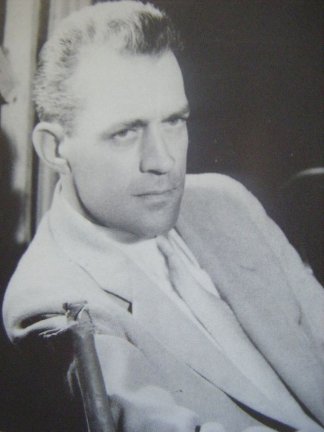 .
.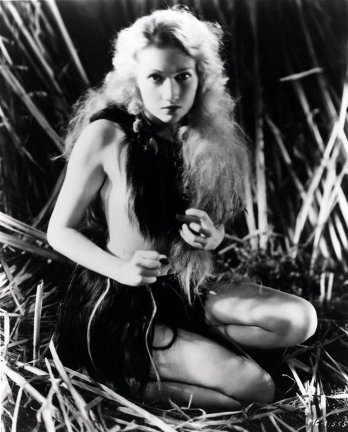
|
www.ERBzine.com/movies 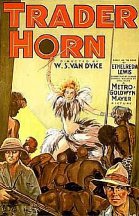 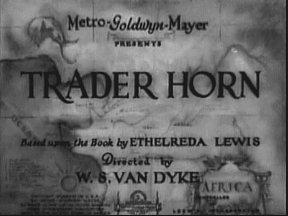 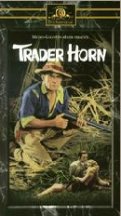
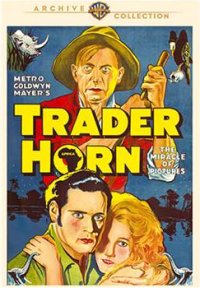
TRADER HORN - THE MOVIE ~ 1931 Credits from the Internet Movie Data Base Site Taglines: WHITE GODDESS OF THE PAGAN TRIBES. THE CRUELEST WOMAN IN ALL AFRICA ! |
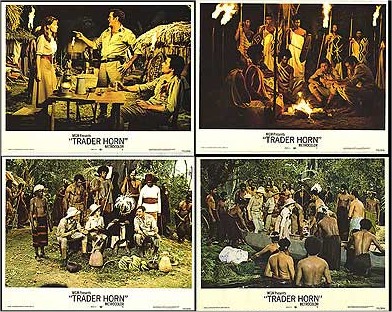
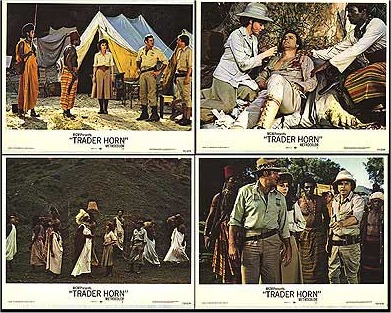
Horning into Africa is
referenced by R. E. Prindle his series:
Themes And Variations: The Tarzan
Novels Of Edgar Rice Burroughs
Tarzan and the Leopard Men
by Edgar Rice Burroughs

WEBJED:
BILL HILLMAN
Visit
our thousands of other sites at:
BILL
AND SUE-ON HILLMAN ECLECTIC STUDIO
All
ERB Images© and Tarzan® are Copyright ERB, Inc.- All Rights Reserved.
All
Original Work ©1996-2010/2018 by Bill Hillman and/or Contributing
Authors/Owners
No
part of this web site may be reproduced without permission from the respective
owners.